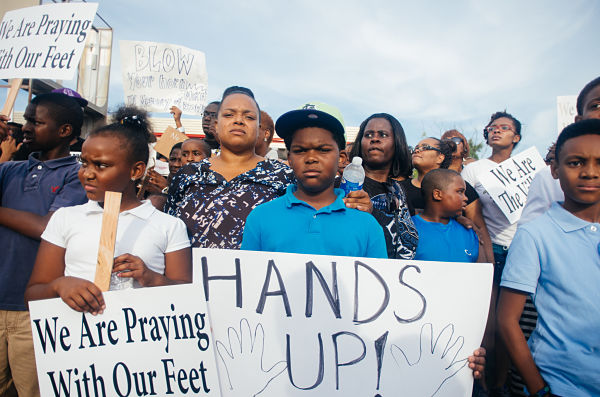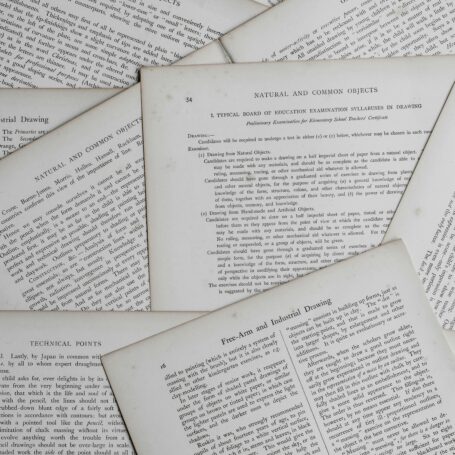Racial Bias and the Criminal Justice System: Research for a Fairer Future
 Was the majority-white jury in George Zimmerman’s trial biased toward the defendant given that the teen-ager he shot and killed, 17-year-old Trayvon Martin, was African American? Would a mostly black jury have reached a different conclusion? How about in the grand jury decision announced yesterday in the shooting death of Michael Brown in Ferguson, Missouri?
Was the majority-white jury in George Zimmerman’s trial biased toward the defendant given that the teen-ager he shot and killed, 17-year-old Trayvon Martin, was African American? Would a mostly black jury have reached a different conclusion? How about in the grand jury decision announced yesterday in the shooting death of Michael Brown in Ferguson, Missouri?

The Federation of Associations in Behavioral and Brain Sciences, or FABBS, with SAGE, the parent of Social Science Space, publishes the journal Policy Insights from the Behavioral and Brain Sciences. This annual journal features research findings in the sciences of mind, brain, and behavior that are applicable to nearly every area of public policy. The first issue comprises 33 articles in social and personality psychology focused on topics including health, education, justice, the environment, and inequality.
In a paper appearing in the new journal Policy Insights from the Behavioral and Brain Sciences, Tufts University diversity researchers Samuel R. Sommers and Satia A. Marotta use the Zimmerman case to illustrate racial bias not just in the jury box but throughout the criminal justice continuum—from suspicion of criminal behavior to charging decisions and the ultimate jury verdict.
Highly publicized cases like Zimmerman’s reinforce the reality of racial biases, according to the paper, Racial Disparities in Legal Outcomes: On Policing, Charging Decisions, and Criminal Trial Proceeding.
Citing empirical research extensively throughout the paper, Sommers and Marotta show how biased associations between race and crime or danger also influence behaviors toward Black versus White defendants and victims.
In one such study, participants were shown a series of photos of a white or black person holding an object—either a gun or something with a similar size and shape, such as a wallet or camera. They then had to decide as quickly as possible whether to push a button labeled “shoot” or one labeled “don’t shoot.”
Ultimately, when the person in the image was unarmed, the participants mistakenly pressed the “shoot” button more often if he was black as opposed to white. Stereotypes about African Americans and violence do not necessarily reflect racial hatred, the paper explains, but more unconscious cultural assumptions about the association between race and crime.
How suspects are charged after an arrest may also be affected by race. Returning to the Zimmerman case, there was a public outcry questioning why he was released from custody without charges; was it influenced by the victim’s race?
Studies show that prosecutors are more likely to seek the death penalty in cases with black defendants and white victims. Defense attorneys, likewise, are more likely to accept a harsher punishment in a plea bargain if the defendant is black. In the juvenile system, black children are up to 18 times as likely to be sentenced as adults than white children, and Black youth accused of felonies tend to be viewed as more at fault for their crimes than are white youth.
Exactly how and why race alters our perceptions throughout the criminal justice system is unclear, and the authors remind us that perceptions are complex and generalized patterns cannot be used to conclude that any one defendant received a particular outcome because of race.
We do know, however, that racial composition can play a role in jury decision making. In one study of mock trials, the attitudes of whites on an all-white jury were compared with those of whites on a racially diverse jury.
“Awareness that they were on a racially heterogeneous jury led white mock jurors to be more skeptical of a black defendant’s guilt, to make fewer factually inaccurate statements when discussing the case, and to be less resistant to talking about controversial issues during deliberations,” the report states.
While bias afflicts even people of good intent, research shows that through training, promoting institutional diversity and other interventions, it can be mitigated.
One of our strongest tools is awareness, the paper states – “making our unconscious associations conscious.”
***
Coverage elsewhere: “Unconscious Racial Bias Taints the Legal System,” by Tom Jacobs | Pacific Standard























































































